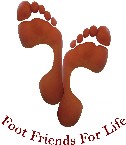Bunions
CONDITIONS
Bunions
What is a bunion?
A bunion is often described as a lump on the foot as the base of the big toe. In fact, the deformity involves the whole of the big toe and the bone that it is connected to (the first metatarsal). Sometimes the big toe ends up under or overlapping the 2nd toe. There may be arthritic changes in the big toe joint, as well as other deformities of the forefoot and toes.
Bunions most frequently appear in middle age, but can sometimes appear in childhood.
Bunions are more common in women, and generally get worse over time.
How are bunions caused?
Many people think that bunions are caused by wearing poor footwear (such as high heeled shoes), but most bunions are caused as a result of the way the foot is structured, and the way we walk, which is inherited. Certain foot types are more prone to developing bunions. It can take many years or decades for bunions to develop.
Symptoms
Symptoms usually occur when wearing shoes that are too tight around the toes, or with high heels. Bunion pain is often activity-related, so that the more you are on your feet, the more uncomfortable they get. Around the site of the bunion itself, there may be pain, inflammation, redness, a burning sensation or numbness. Often people with bunions often get other foot problems, such as callouses, corns or ingrown toenails, and these can all cause pain.
Diagnosis
The foot deformity itself can be readily observed. Sometimes, X-rays are taken in order to determine the extent of the deformity, and whether there are any related changes, such as arthritis in the big toe joint.
Treatment
Since bunions are progressive, treatment options may change over time. There are
conservative treatment options as well as surgical options.
conservative treatment options as well as surgical options.
Conservative Treatment
- Changes in footwear. It is important to wear appropriate footwear that can accommodate the bunion and support the foot properly. High heeled shoes or shoes with pointed toes should not be worn on a regular basis.
- Padding. Can relieve pressure around the bunion.
- Activity modifications. Avoiding or minimising activities that cause the bunion pain may be an option.
- Orthotics. Can help you to walk more efficiently, which may help with symptoms and may also minimise the progression of the deformity.
- Medications. Talk to your GP about the possibility of using anti-inflammatory medication when your bunions get sore.
Surgical Treatment
People may consider surgical treatment of their bunions for any of the following
reasons:
reasons:
- Pain
- Inability to wear normal footwear
- Concerns with the appearance of the deformity
Modern bunion surgery is highly effective, and in many cases can result in a “normal looking” foot again. Patients in most cases only need to be in hospital overnight, and there is usually minimal post-operative discomfort. After surgery, patients will have restricted activity for several weeks, and will have to wear a special postoperative shoe during this time.
There are a number of different surgical procedures that are used to treat bunions. Often, if the foot has related deformities, such as hammertoes, then these can be surgically corrected at the same time. Specialist Podiatrists called Podiatric Surgeons can perform bunion surgery.
